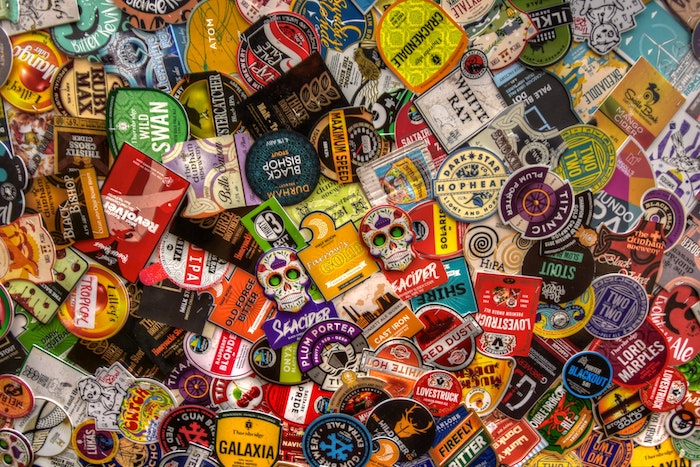

What is brand awareness?
Brand awareness reflects how well your target audience knows, recognizes, and remembers your brand.

Whether you’re starting a business or trying to grow an existing business, you face a common challenge: how do you get the word out about your brand and generate buzz?
People are exposed to endless ads. From the minute a person opens their eyes and looks at their social media feed, they see marketing messages.
How can you stand out in such a noisy world and grab peoples’ attention, so they remember who you are?
There are no recent, accurate numbers on how many ads consumers see daily, but it’s safe to estimate that a person sees thousands of ads and marketing messages every day. Businesses spent $240 billion on advertising in the United States last year. The number increases annually as more people get online and our lives become more digitized.
Why is brand awareness critical?
When your target audience needs a product or service you offer, you want them to think about your brand. For that to happen, your brand must stand apart as the authority in your field.
It takes time and a strong brand strategy to build brand awareness. Brand awareness rarely happens by chance.
That’s why you need to build a strategy and consider how you’ll get people to know, recognize, and remember your brand. If you’re starting and working on a business plan, your investors and lenders will carefully scrutinize your market research and go-to-market strategy and assess whether you have a solid roadmap to build brand awareness in your target market.
How can you build brand awareness on a small budget?
The biggest challenge when looking to increase your brand awareness is often competing with giant corporations with deep pockets.
If you sell a new beverage, how can you hope to overcome the buzz behind Coca-Cola or Pepsi? Not only do they saturate the airwaves with advertising, but they have a presence in nearly every store and restaurant in America.
Fortunately, you have creativity and raving fans on your side.
Most small businesses don’t fall into the food industry category, but you likely still have some established brands you’re competing against.
Here are our favorite tips to make the most of your brand identity and brand image, even if you don’t have a big marketing budget.
1. Know who you are
Before increasing brand awareness, you must know who you are as a brand.
What are your core values?
Look at your company through the eyes of potential customers.
How do your unique benefits help them most?
You might have the cutest office on the block, but customers won’t care unless it results in a better product for them. Think about your unique selling proposition (USP) through your users’ eyes.
Once you have a USP in mind, you should promote it anytime you mention your brand name.
Powerfully simple strategy for business growth

Our brand identity workbook has actionable insights and steps to help you build a strong brand identity.
We just emailed the brand identity workbook to you.
2. Choose the right brand colors
Color has a huge impact on human emotions and how users respond to your business. Did you know color can increase brand recognition by 80% or more?
Many big-name brands use the same color consistently to embed the company logo or business name in users’ minds, such as UPS’s brown and yellow.
Be sure you:
- choose your color palette based on the emotions you’d like to generate from your audience.
- use those colors consistently in every impression you make on a potential client.
- use the same hues on your website, social media, in-store, product packaging, and ads.
- if you find that your brand identity doesn’t cut it anymore, consider rebranding.
You can add colors here and there to make a more emotional impact. Red can generate excitement, so it’s often a good option for call-to-action (CTA) buttons. Blue is a reassuring, steady color that can lend itself well to financial businesses. Black is elegant looking.
What color works best for your target audience?
3. Seek client referrals
Word-of-mouth marketing is one of the most powerful tools at your disposal. A recommendation from someone who has used your product or service goes a lot farther than you asking someone to trust you.
People are much more likely to take the word of their peers. You can start a referral program to reward your customers for sending new business your way.
Your loyal customers will be happy to tell others what they love about your brand. Sometimes you just have to ask for their help to remind them to step up and share.
4. Find networking opportunities
Another way to spread the word about your business is to connect with other business owners in your area and industry. Most local communities have a chamber of commerce. Ask if they have events where you can interact with others in your area.
Team up with complementary companies to run joint promotions.
For example, a restaurant and a theater might team up and offer a discount for couples wanting to go to dinner and a movie. Another idea is to share one another’s mailing lists by promoting the other business in a newsletter.
In addition to reaching one another’s customer base, you’ll also gain access to people experienced in running a small business. They may have additional ideas on how to extend your brand’s reach without spending a fortune.
5. Experiment to create viral campaigns
There are 4.48 billion people on social media, increasing over 13% in one year. If you aren’t already tapping into social platforms to spread the word about your business, now is the time to jump on board.
Think about how you can spread the word to your target audience. You don’t have to reach over four billion people. You only need to reach the ones likely to become your customers. You can do so via advertising and messaging highly targeted to the demographics you select.
You can also come up with campaigns likely to spread, such as asking your audience to do something good and tagging your business with a hashtag.
Have your users share a photo using your product and donate money for likes and shares to a particular cause.
Think about what your audience is most likely to share that might spread the word about your brand while also making a positive difference in the world.
6. Establish your expertise
A blog can be your budget-friendly best friend in building brand awareness. You can establish yourself as an expert on a topic and gain traffic from search engines. Study search engine optimization (SEO) strategies, and use best practices to help your articles rank high in results.
For example, you might have a hard time ranking for a popular keyword such as “pizza,” but you can improve your SEO and rank for a phrase such as “pineapple pizza recipe for new cooks.”
Learn the format, length, and best practices to grab the attention of search engines and browsers, and you’ll gain traffic to your site.
Once people see you as the go-to expert on a topic, they’re more likely to buy from you when they need what you sell.
7. Encourage company culture
The right company culture puts customers first and gets workers excited about what you’re doing. If you train your staff and make them feel part of the team, they can help spread the word about your brand.
Remember that every person who works for you has family and friends. When they tell people how much they love their job and how amazing your products and services are, those folks will want to see for themselves.
You can also let them give out family and friends discounts for an added perk. Reward them for big orders with a freebie, discount, or gift card. Look for ways to reward your most loyal workers just as you reward your loyal customers.
You should also set some social media policies. It’s good to let your staff post about your brand and share links, but you need to control it, or it could get out of hand. Perhaps have a company page where you share posts they can put on their walls and reward the employee who has the most likes and shares.
8. Avoid spam
In the early days of trying to get the word out about your brand, it’s easy to overdo it. You see a question on an online forum, and you want to answer that your product is the perfect solution.
However, being spammy will only hurt your brand reputation in the long run. You’re much better off offering some generic advice and hoping someone clicks on your name and sees you know what you’re talking about.
You could also say something along the lines of, “This is my area of expertise, and here is how you fix the issue.” Since you aren’t outright mentioning your brand, you aren’t spamming groups, but you also plant a seed in the reader’s mind to possibly go look you up.
Don’t email people who haven’t signed up for your list. Don’t jump onto threads other marketers started and take them over. Be respectful and share about your business only when appropriate to do so. You want to increase awareness but in a positive way.
Never miss an opportunity
Take advantage of every opportunity you’re given to increase exposure for your business. Add your name to your email signature. Put your logo on your checks. Add a tagline to your product packaging.
If someone invites you to a radio talk show, accept. If you get a chance to put your name on a little league banner, take it. Look for every budget-friendly thing that fits your audience and leap on it.
In the early days, especially, it’s vital to get your name in front of others as much as possible. Later, you can choose to be pickier and invest more in targeted marketing.
